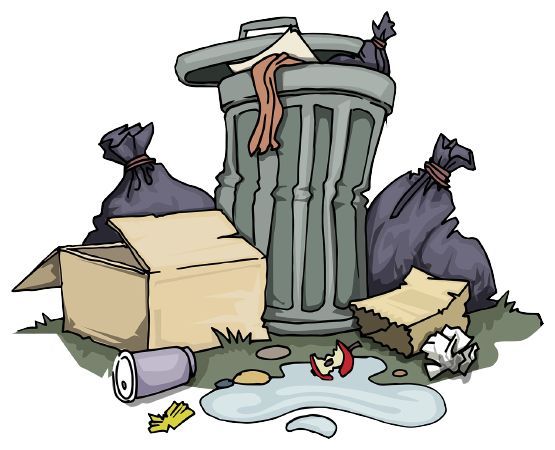Alarming Truths About Littering That Everyone Must Know
Littering is one of the most visible forms of environmental negligence, affecting not just the beauty of surroundings but also public health, wildlife, and the sustainability of ecosystems. Despite numerous campaigns and regulations, littering remains a persistent problem worldwide. Understanding its history, significance, and consequences is crucial for fostering responsible behavior and protecting the planet.
This guide explores the history, facts, daily life impact, societal significance, and strategies for reducing littering, along with timelines, FAQs, and practical advice for cultivating a cleaner environment. By addressing littering consciously, individuals and communities can make meaningful contributions to environmental preservation.
History of Littering
The act of littering has existed as long as human settlements:
Ancient Civilizations: Early cities like Rome and Athens struggled with waste disposal. Streets often accumulated organic and inorganic waste, prompting the first rudimentary sanitation measures.
Middle Ages: Rapid urbanization without proper waste management caused severe sanitation issues, spreading diseases like plague and cholera.
Industrial Revolution: The rise of factories and urban population density exacerbated littering, as industrial waste and household trash were dumped into streets and rivers.
20th Century: Environmental awareness emerged, with early anti-litter campaigns, regulations, and community cleanup initiatives.
21st Century: Modern campaigns, legal frameworks, and public education emphasize sustainable waste disposal, recycling, and environmental responsibility, but littering remains a challenge due to convenience culture and consumerism.
Facts About Littering
Environmental impact: Litter harms soil, water, and air quality, affecting ecosystems and biodiversity.
Wildlife threat: Animals can ingest or get entangled in litter, causing injuries or death.
Public health risk: Accumulated litter can harbor bacteria, attract pests, and contribute to the spread of disease.
Economic consequences: Cleaning up litter costs cities millions of dollars annually.
Visual pollution: Litter diminishes the aesthetic value of communities, parks, and public spaces.
Plastic dominance: Single-use plastics are a major contributor, taking hundreds of years to decompose.
Timeline of Littering Awareness
Ancient Era: Rudimentary waste disposal systems in cities like Rome.
Medieval Period: Limited sanitation measures; waste often disposed into streets or rivers.
Industrial Revolution (18th–19th Century): Increased urban waste highlighted the need for structured waste management.
Early 20th Century: Introduction of public awareness campaigns and waste regulations in growing urban centers.
Late 20th Century: Environmental movements focus on reducing litter, recycling, and sustainable living.
21st Century: Global initiatives like “Clean Up the World,” bans on single-use plastics, and community-driven campaigns emphasize environmental stewardship.
Significance of Addressing Littering
Tackling littering has personal, societal, and environmental significance:
Environmental protection: Reduces pollution, protects wildlife, and preserves natural habitats.
Public health: Clean surroundings prevent disease spread and promote hygiene.
Community pride: Litter-free areas foster a sense of responsibility and civic pride.
Economic savings: Lower cleanup costs and increased tourism in clean communities.
Behavioral influence: Modeling responsible waste disposal encourages others to follow suit.
Daily Life Impacts
Littering affects daily life in numerous ways:
Neighborhood aesthetics: Littered streets and parks reduce the enjoyment of outdoor spaces.
Health hazards: Contaminated areas increase exposure to harmful bacteria and pests.
Recreational impact: Litter in public spaces, beaches, and parks deters community engagement and leisure activities.
Economic burden: Municipalities spend significant budgets on cleaning up litter, diverting funds from other essential services.
Wildlife interaction: Encounters with littered environments can harm pets and local fauna.
Observance and Important Points
To reduce littering and foster responsible behavior, consider the following practices:
Proper disposal: Use trash bins, recycling containers, and designated waste collection points.
Reduce single-use plastics: Carry reusable bags, bottles, and containers.
Participate in cleanups: Engage in community or school-driven litter removal activities.
Educate others: Spread awareness about the negative impacts of littering.
Follow local laws: Abide by anti-littering regulations and penalties.
Responsible tourism: Dispose of waste properly while traveling and respect natural sites.
Advocate for recycling: Support initiatives that promote recycling and sustainable packaging.
Lead by example: Your behavior influences others in your community.
Common FAQs About Littering
Q1: Why is littering still a problem despite awareness campaigns?
A: Convenience, lack of civic responsibility, and insufficient enforcement of laws contribute to ongoing littering.
Q2: How long does litter take to decompose?
A: Decomposition varies: paper takes months, aluminum cans up to 200 years, and plastic bottles hundreds of years.
Q3: What are the most common littered items?
A: Cigarette butts, plastic bottles, food wrappers, and packaging materials are among the most frequently discarded items.
Q4: Can small acts make a difference?
A: Yes. Individual responsibility, proper disposal, and community participation collectively reduce littering significantly.
Q5: How can communities reduce littering effectively?
A: Through education, regular cleanups, stricter enforcement, accessible waste bins, and promoting sustainable practices.
Wishing and Social Significance
Reducing littering has personal, social, and environmental benefits:
Empowers individuals: Encourages responsibility, environmental awareness, and civic participation.
Enhances community pride: Clean spaces improve morale, safety, and aesthetic appeal.
Protects ecosystems: Responsible waste disposal preserves habitats and biodiversity.
Supports sustainable development: Reduces environmental impact and conserves resources.
Global relevance: Collective action against littering contributes to worldwide environmental conservation.
Conclusion: Importance in Daily Life and Society
Littering is more than an eyesore—it is a significant environmental, health, and social challenge. From ancient urban waste issues to modern global campaigns, humanity has long struggled with improper waste disposal. Addressing littering is essential for public health, environmental protection, economic savings, and societal well-being.
In daily life, responsible waste disposal improves neighborhood aesthetics, reduces health risks, and fosters a sense of pride and civic duty. Socially, it encourages community participation, sets positive examples for children, and strengthens collective responsibility. Environmentally, it protects wildlife, preserves ecosystems, and promotes sustainability.
Ultimately, eliminating littering is a powerful step toward a cleaner, healthier, and more harmonious world. By practicing proper waste management, participating in cleanups, and spreading awareness, individuals contribute to a society that values its environment, well-being, and future generations.








